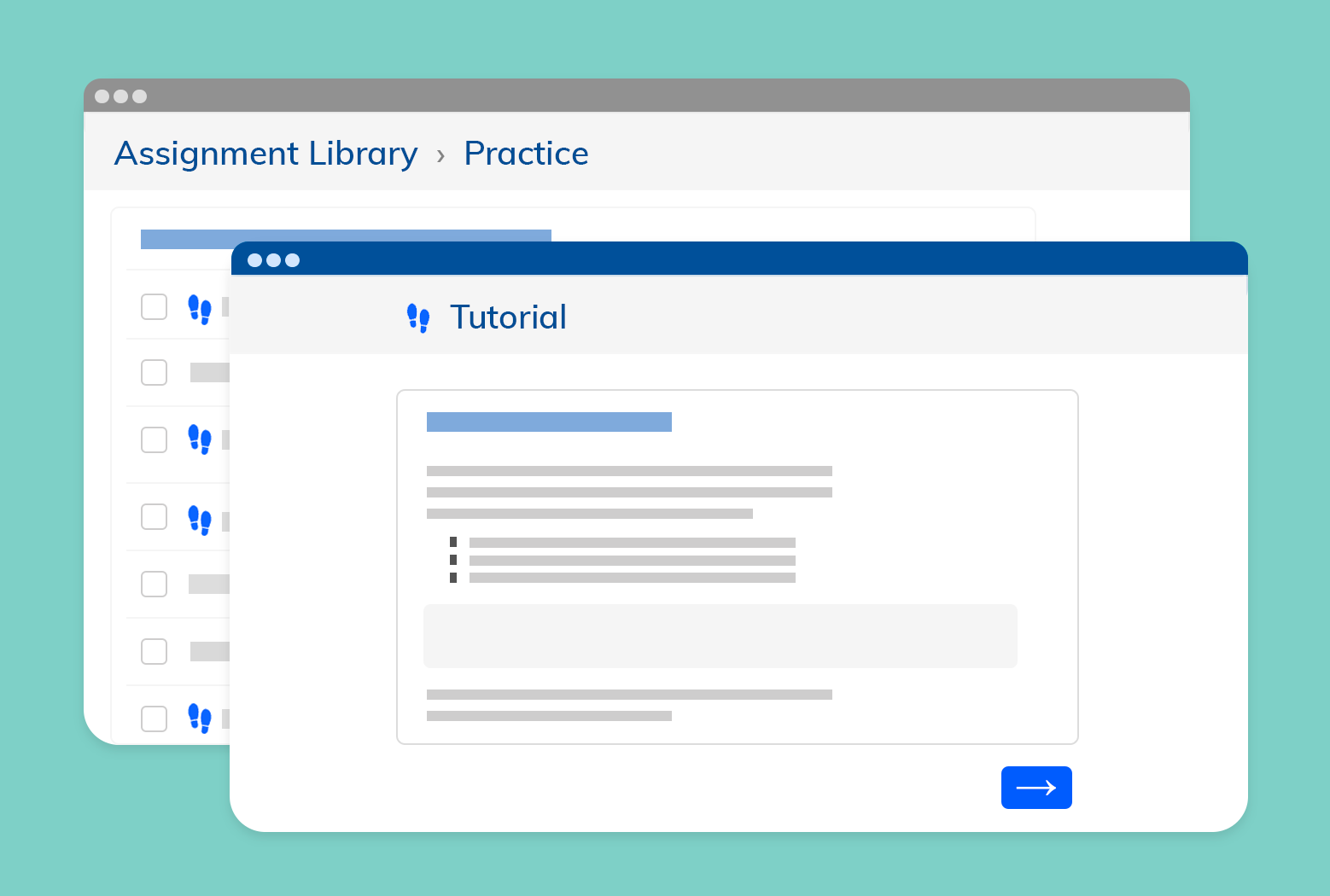Everything You Need to Know About NoRedInk Tutorials

NoRedInk’s interactive tutorials break down complex writing and grammar topics into manageable chunks.
Teaching writing is a challenging, multifaceted endeavor. It involves deliberately guiding students through cycles of modeling, scaffolding, practice, and feedback so that they learn, retain, and understand how to apply key writing and grammar concepts. To streamline this process for teachers, NoRedInk offers resources and activities that touch on every step of learning how to write well. Below, we explore the ins and outs of one of these types of resources: NoRedInk tutorials.
What are NoRedInk tutorials?
NoRedInk tutorials are interactive learning guides that break down many of the standards-aligned topics in our curriculum into approachable, easy-to-understand chunks. Tutorials cover everything from specific grammar skills like identifying misplaced modifiers to advanced writing skills like building counterargument paragraphs.
Each highly visual learning tutorial walks students step by step through the foundational components of the topic at hand. It then poses a practice question or two as a check for understanding and provides immediate remediation to students who return incorrect answers, ensuring they don’t walk away with any misconceptions.
As an example, NoRedInk’s “Writing a Literary Analysis Essay” tutorial delivers a primer on what makes a strong thesis, introduces the concept of textual interpretation, and highlights the importance of text-based evidence. It also includes reminders about how to analyze the ways an author’s approach to narration, structure, and word choice impacts readers. At the end of the tutorial, students are asked about the purpose of a literary analysis essay and the appropriate sources of evidence for such an essay.
Where can teachers find these learning guides?
Tutorials are accessible from several places. When browsing the learning pathways in the NoRedInk Assignment Library, logged-in teachers will see blue footprints next to any topic that includes a tutorial. Clicking the footprints icon enables a teacher to review the tutorial prior to using it and copy the tutorial’s URL to share with their class if necessary. Each NoRedInk Module also features at least one tutorial among its sequenced, skill-specific resources and activities.
Additionally, tutorials appear in the “Tips & Examples” tab of NoRedInk Guided Drafts. These scaffolded writing activities deliver just-in-time support to students as they work through the process of drafting full-length essays. If a student needs a refresher on what they should be including in their essay, they’ll have a genre-specific learning tutorial right at their fingertips.
(For a centralized catalog of NoRedInk tutorials, check out this list.)
How should teachers use NoRedInk tutorials?
Tutorials are a remarkably flexible resource that can be used for preliminary instruction or for review, in group settings or individually. Here are several ways that teachers commonly leverage these learning guides as part of their classes:
1. Incorporate tutorials into your pre-teaching strategy
Because they walk through complex topics one step at a time, tutorials are ideally suited to being used for pre-teaching. Try projecting a tutorial on the board and using it as the cornerstone of your introduction to a topic. Make sure you leave space for students to ask questions at multiple junctures in the tutorial, and poll your students on the answers to the check-for-understanding questions (either through a show of hands or a written response they turn in). This will enable you to identify which students might need additional support later on.
2. Start the pre-writing process with a tutorial
Making the jump from skills exercises and short-form writing to drafting a full essay can be intimidating for many students—particularly if they’re working with a difficult subject or in an unfamiliar genre. To ease their anxieties, instruct students to carefully review a tutorial so they have a clear roadmap of the elements their essays will need to include. Then, encourage students to use NoRedInk’s genre-specific pre-writing resources to start planning their writing.
3. Use tutorials to scaffold revisions
As you’re reviewing your students’ initial drafts, make note of common errors or areas for improvement. While you can—and often should—leave direct feedback on specific phrasings, sentences, or paragraphs that need a second pass, there’s value in providing students with a more robust explanation of their errors than can be contained in an inline comment. Directing students to a relevant tutorial and encouraging them to use it as a guide as they revise their work is an efficient way to ensure each student gets the information they need to improve their writing.
4. Have students document what they learn from a tutorial
Early on in a unit, assign a learning tutorial to students for homework. Ask them to take notes about their key takeaways as they complete the tutorial. If you want students to produce a more formal artifact of their learning, you can create a custom Quick Write with the following prompt: “You’ve just completed a tutorial. How would you explain this concept to a classmate in your own words? Make sure you include the most important information to remember about this topic.”
Build better writers in your classroom
NoRedInk tutorials’ interactivity makes them a powerful bridge from theory to practice. When paired with adaptive Practice exercises, engaging writing activities, and direct instruction, tutorials give students a sturdy foundation on which to build a strong writing skill-set.
Interested in incorporating these exercises, activities, and tutorials into your classroom? Sign up for NoRedInk for free today!